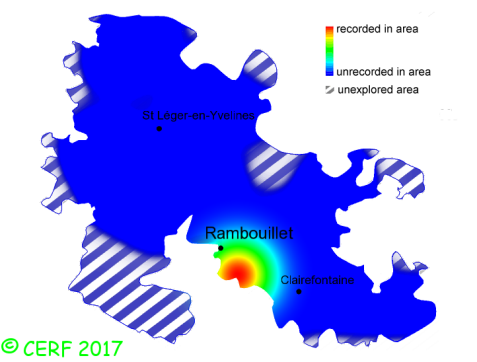|
Ramaria aurea (Schaeff.) Quél.
|
common name(s) : Golden Coral Fungus
New classification: Basidiomycota/Agaricomycotina/Agaricomycetes/Phallomycetidae/Gomphales/Gomphaceae
Former classification: Basidiomycota/Homobasidiomycetes/Aphyllophoromycetideae/Cantharellales/Clavariaceae
synonyms: Clavaria aurea, Clavariella aurea
edibility : discard
|
|
|
The fruiting body is shaped like a branched shrub, with 2 or 3-tooth forked cylindrical branches, orange-yellow to golden yellow, without stem, but with a thick white to cream trunk.
its taste is pleasant;
The fertile surface is smooth.
It grows on the ground, in broad-leaved and coniferous woods, in damp areas, with spruce, pine, beech.
The fruiting period takes place from July to December.
| Dimensions: |
width of fruiting body approximately 10 cm (between 5 and 15 cm) |
| | total height approximately 13 cm (between 6 and 20 cm) |
Distinctive features : golden yellow coral-like fruiting body; branched, with cylindrical branches; round tips, like a cauliflower, with a brighter coulour in the youth; white flesh, pale-cream trunk; under deciduous trees
Ramaria aurea is rare and confined in the forest of Rambouillet, and is quite rare, more generally speaking
.
|  | | Above : distribution map of Ramaria aurea in the forest of Rambouillet |
|
page updated on 14/01/18